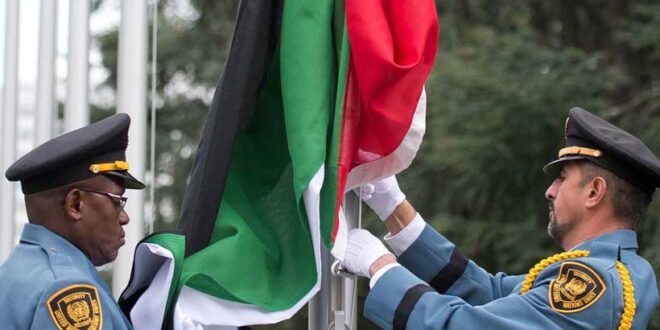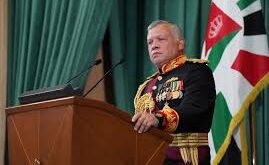The Palestinian struggle for statehood has long been a symbol of resistance against occupation and oppression, particularly in the context of the Israeli-Palestinian conflict. However, alongside external challenges posed by Israeli occupation, military aggression, and international diplomacy, the internal divisions within the Palestinian political and social landscape have also significantly undermined the cause. The disunity between major Palestinian factions, notably Fatah and Hamas, has fractured Palestinian politics and society, hampering efforts to achieve self-determination and a unified stance against external pressures.
Historical Context: The Birth of Divisions
The origins of Palestine’s internal divisions can be traced back to the early years of the Palestinian national movement. After the 1948 Nakba (catastrophe) and the establishment of Israel, hundreds of thousands of Palestinians were displaced, leading to the formation of various resistance movements and organizations aimed at securing Palestinian rights and statehood.
The Palestine Liberation Organization (PLO) was established in 1964 as an umbrella organization to represent the Palestinian people and lead the struggle for liberation. Fatah, founded by Yasser Arafat, quickly became the dominant faction within the PLO, advocating for armed resistance against Israel and negotiating for a two-state solution. Fatah’s leadership was widely recognized as the legitimate representative of the Palestinian people for decades.
However, the rise of Hamas, an Islamist movement founded in 1987 during the First Intifada, created a powerful ideological and political alternative to Fatah. Hamas rejected the PLO’s approach of negotiation and compromise with Israel, advocating for the complete liberation of Palestine through jihad and the establishment of an Islamic state. This ideological difference set the stage for growing tensions between the two movements.
The 2006 Elections: A Turning Point in Palestinian Politics
The political rift between Fatah and Hamas escalated following the 2006 Palestinian legislative elections, which saw Hamas win a surprising and decisive victory. The election result was widely interpreted as a rejection of Fatah’s leadership and its perceived corruption and ineffectiveness in achieving Palestinian goals. Hamas’ victory, however, was not just a political triumph but a declaration of the deepening ideological divide within Palestinian society.
The election results led to a power struggle between Fatah, which continued to dominate the Palestinian Authority (PA) based in the West Bank, and Hamas, which sought to assert its authority over Palestinian governance. Efforts to form a unity government between the two factions quickly fell apart, leading to violent clashes between Fatah and Hamas supporters.
In 2007, Hamas seized control of the Gaza Strip after a brief civil conflict, effectively splitting the Palestinian territories into two separate political entities: Hamas-controlled Gaza and the Fatah-dominated West Bank, where the PA continued to operate under the leadership of Mahmoud Abbas. This division persists to this day and has significantly weakened the Palestinian position both domestically and internationally.
The Impact of the Internal Divide on Palestinian Unity
The ongoing division between Fatah and Hamas has had devastating consequences for the Palestinian cause, both in terms of its political aspirations and the daily lives of Palestinians. Here are some key ways in which the internal divide has hindered the Palestinian struggle:
- Weakened Negotiating Power: One of the most significant impacts of the Fatah-Hamas divide is the weakening of the Palestinian negotiating position in peace talks with Israel and the broader international community. With no unified Palestinian leadership to represent the interests of the Palestinian people, Israel and other external actors have often been able to exploit the divisions to their advantage. For instance, Israel has been able to claim that it has no credible partner for peace, given that the PA represents only the West Bank and not Gaza. Similarly, international mediators, including the United States, have struggled to facilitate meaningful negotiations due to the lack of a single, authoritative Palestinian voice. The absence of a unified stance has stymied efforts to revive the peace process, leaving the situation in limbo and contributing to the ongoing occupation and violence.
- Humanitarian Crisis in Gaza: The internal division has also exacerbated the humanitarian crisis in Gaza. Following Hamas’ takeover of the territory, Israel imposed a strict blockade on Gaza, severely restricting the movement of goods and people. The blockade has resulted in dire living conditions for the more than two million Palestinians living in Gaza, with shortages of food, medicine, electricity, and clean water. The PA, which has at times withheld funding to Gaza as part of its political struggle with Hamas, has also contributed to the suffering of Gaza’s population. This internal rivalry has not only worsened the humanitarian situation but has also weakened the Palestinian leadership’s ability to present a unified front to the international community in demanding an end to the blockade and Israeli occupation.
- Lost International Support: Palestinian disunity has further eroded international support for the Palestinian cause. While many countries and international organizations, including the United Nations, continue to advocate for Palestinian rights, the lack of a cohesive Palestinian leadership has made it difficult for foreign governments to engage constructively. Many international donors, for example, are reluctant to provide financial assistance to Gaza due to concerns about Hamas’ governance and allegations of corruption or links to terrorism. This loss of international support has further isolated the Palestinian territories, making it harder for Palestinians to garner the global solidarity and diplomatic backing they need to achieve their political goals.
- Erosion of Palestinian National Identity: The internal division between Fatah and Hamas has also contributed to an erosion of Palestinian national identity. For many Palestinians, particularly the younger generation, the concept of a unified, sovereign Palestinian state has become increasingly abstract and unattainable. Instead, the reality on the ground—two separate political entities with competing visions for the future—has led to a fragmentation of Palestinian identity and a sense of disillusionment with both Fatah and Hamas. The ideological battle between the secular nationalism of Fatah and the Islamist vision of Hamas has further polarized Palestinian society, making it difficult to foster a sense of national unity and collective purpose. This division has weakened the social fabric of Palestinian society and undermined efforts to build a cohesive national movement capable of confronting external challenges.
Attempts at Reconciliation and the Way Forward
Over the years, there have been several attempts to bridge the divide between Fatah and Hamas, but none have succeeded in achieving lasting reconciliation. Egypt and Qatar have both played key roles in mediating talks between the two factions, resulting in multiple agreements, including the 2011 Cairo Agreement and the 2017 reconciliation deal brokered by Egypt. However, these agreements have repeatedly faltered, largely due to mutual distrust and disagreements over issues such as security control and governance.
The path to Palestinian unity will require not only political will from both Fatah and Hamas but also the active involvement of the international community. Regional powers like Egypt, Qatar, and Turkey can continue to play a critical role in facilitating dialogue and offering incentives for reconciliation. The European Union and the United Nations can also provide diplomatic and financial support to encourage Palestinian factions to resolve their differences and form a united front.
Furthermore, grassroots movements within Palestinian society could play a vital role in pushing for unity. Civil society organizations, youth movements, and women’s groups can exert pressure on political leaders to prioritize the national interest over factional rivalries. These groups can also help to rebuild a sense of Palestinian national identity, emphasizing the shared history, culture, and aspirations of all Palestinians, regardless of political affiliation.
To conclude, the internal divisions within Palestine, particularly the rift between Fatah and Hamas, have had profound consequences for the Palestinian cause. The ongoing political, ideological, and territorial split has weakened Palestinian negotiating power, worsened the humanitarian crisis in Gaza, and eroded international support for Palestinian self-determination.
While efforts at reconciliation have so far failed, the path to Palestinian unity remains essential for achieving a just and lasting solution to the Israeli-Palestinian conflict. A unified Palestinian leadership, supported by regional and international actors, is critical to restoring hope for the establishment of a sovereign Palestinian state and ensuring that the aspirations of the Palestinian people for peace, justice, and dignity are realized.
 Geostrategic Media Political Commentary, Analysis, Security, Defense
Geostrategic Media Political Commentary, Analysis, Security, Defense





